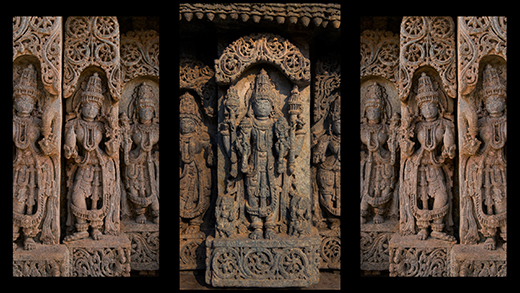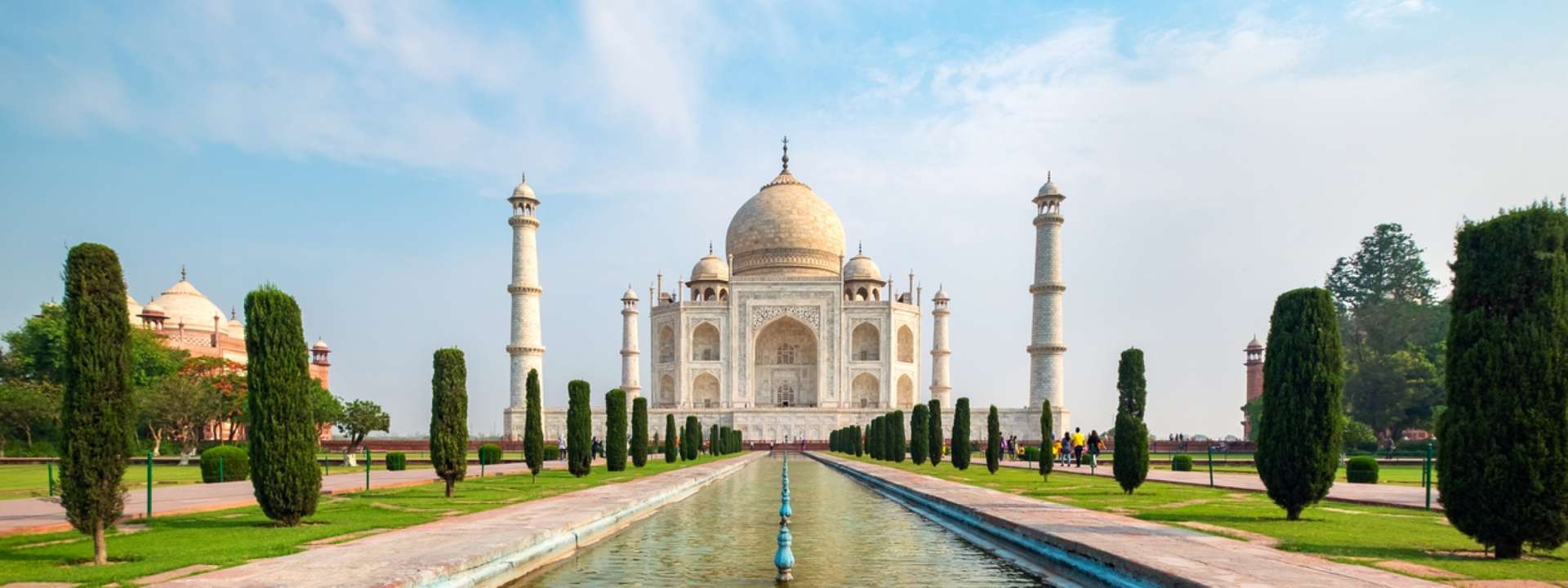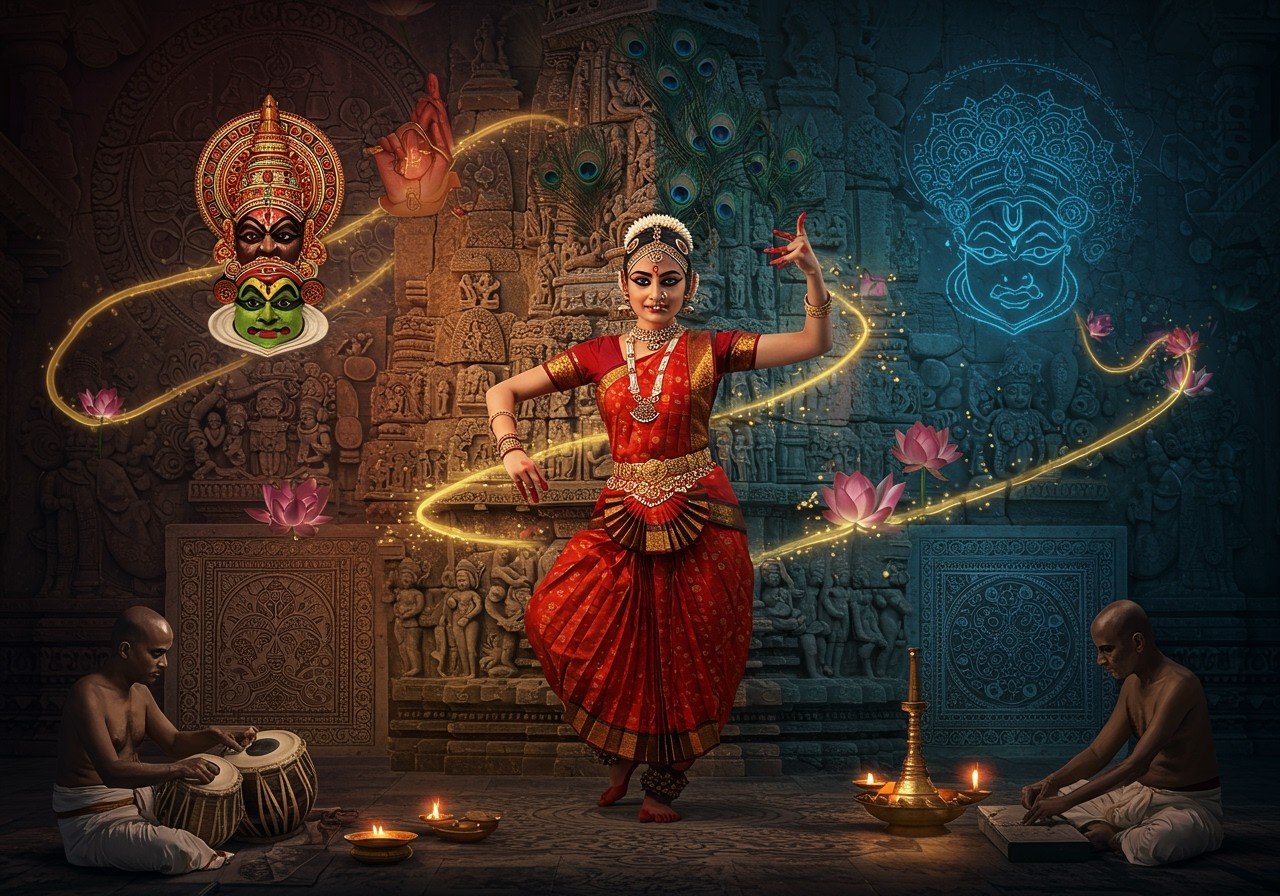Art, History, and Tradition: Embark on a Cultural Odyssey in India

Introduction
Overview of India's Cultural Riches
India, a vast subcontinent with a remarkable tapestry of cultures, showcases an extraordinary diversity steeped in history. With over 1.3 billion people, the nation is home to a multitude of ethnic groups, languages, and traditions. The rich cultural landscape of India is not just a testament to its ancient heritage but is also an evolving expression of contemporary life. It spans centuries through:
- Languages: India boasts 22 officially recognised languages, with hundreds of dialects, each telling stories of its people and history.
- Arts: From classical dance forms like Bharatanatyam and Kathak to elaborate handicrafts, India's artistic traditions are world-renowned.
- Festivals: Major festivities such as Diwali, Eid, Christmas, and countless regional celebrations fill the calendar, bringing vibrancy to everyday life.
This mélange of cultures creates a unique identity that is both intricate and fluid, inviting individuals from all walks of life to explore and embrace its beauty.
Significance of Art, History, and Tradition in Indian Culture
Art, history, and tradition are invaluable threads woven into the fabric of Indian society. These components not only define cultural identity but also play pivotal roles in the lives of individuals and communities.
- Art: Creativity serves as a medium for expressing spiritual beliefs and social messages. For instance, the intricate patterns of Warli paintings reflect indigenous values and the connection to nature.
- History: The historical age of monuments, such as the Taj Mahal and the Ajanta Caves, narrate tales of love, devotion, and advanced craftsmanship. Visitors often find themselves captivated by the stories behind these sites, cementing a broader understanding of the subcontinent's past.
- Tradition: Rituals and customs provide a sense of belonging and continuity. For instance, the rites of passage in Indian weddings are elaborate, embodying the essence of familial bonds and community spirit.
Through these elements, one can gain insight into the collective consciousness of a nation rich in heritage. The beauty of India lies not only in its external expressions but also in the profound significance imbued within its arts, histories, and traditions.

Artistic Marvels of India
Traditional Indian Art Forms: From Miniature Paintings to Sculptures
Transitioning from the rich cultural roots of India, one cannot ignore the remarkable artistic expressions that have flourished over the centuries. Traditional Indian art forms, characterised by their intricate craftsmanship and profound symbolism, serve as reflections of the diverse cultures residing within the country.
- Miniature Paintings: These exquisite paintings capture detailed scenes, often depicting historical narratives, royal life, and natural beauty. Originating from various regions, such as Rajasthan and Mughal courts, these artworks are created using fine brushes and vibrant natural pigments, showcasing the artistic finesse of their creators.
- Sculptures: Indian sculptures, often carved from stone or wood, depict deities and mythological figures, particularly in temples. The intricate carvings found in places like Khajuraho and Hampi not only showcase the technical skill but also reveal the stories and beliefs of ancient civilisations.
Each of these art forms tells a story and provides a glimpse into the values and aesthetics of Indian society.
Contemporary Indian Art Scene: Graffiti, Street Art, and Beyond
In contrast, the contemporary Indian art scene is evolving rapidly, reflecting a blend of traditional influences and modern expressions. Artists today are embracing new mediums to engage with a younger audience and to comment on social issues.
- Graffiti and Street Art: Urban centres like Mumbai and Delhi have become canvases for graffiti artists who use vibrant colours and compelling designs to express political, environmental, and cultural messages. These artworks become accessible to the general public, breaking the barriers often associated with traditional art galleries.
- Experimental Techniques: Modern Indian artists are increasingly pushing the boundaries of creativity by incorporating contemporary themes using mixed media, installations, and technology. For example, artists like Subodh Gupta use everyday objects to create thought-provoking installations that comment on migration and identity.
As India embraces these artistic movements, the blending of traditional and contemporary styles showcases the dynamic nature of the country's art scene. This not only preserves heritage but also invites dialogues about contemporary societal issues, illustrating that the journey of Indian art is as rich and diverse as the country itself.

Tracing History Through India's Heritage Sites
UNESCO World Heritage Sites in India
Building upon the artistic marvels of India, the country’s heritage sites provide an invaluable connection to its rich history and cultural legacy. Among these, UNESCO World Heritage Sites stand out for their exceptional historical and architectural significance.
India proudly boasts over 40 UNESCO World Heritage Sites, each narrating a unique chapter of its past. Some notable mentions include:
- Taj Mahal: A symbol of love, the Taj Mahal in Agra embodies Mughal architecture and artistry. Considered one of the Seven Wonders of the World, its meticulous design and shimmering white marble capture the imagination of millions.
- Khajuraho Temples: Famous for their intricate sculptures, these temples in Madhya Pradesh exemplify medieval Indian art and architecture, with carvings that depict various aspects of life.
- Hampi: This ancient village in Karnataka, a former capital of the Vijayanagara Empire, showcases the ruins of grand temples and palaces, reflecting the grandeur of a bygone era.
These sites are not just tourist attractions; they serve as reminders of India’s diverse history and cultural evolution, inviting visitors to reflect on the narratives that shaped the nation.
Historical Landmarks: Palaces, Forts, and Temples
In addition to UNESCO sites, India is dotted with numerous palaces, forts, and temples that bear testimony to the country’s rich and varied history. These historical landmarks reflect the architectural brilliance and strategic prowess of ancient rulers.
- Forts: The forts of Rajasthan, such as Amer Fort and Mehrangarh Fort, are awe-inspiring. Built from local stone and often featuring intricate carvings, they offer insights into the defensive strategies of the Rajput clans while commanding stunning views of their surroundings.
- Palaces: The City Palace in Udaipur is a magnificent fusion of architectural styles, showcasing the opulence of the Mewar dynasty. Visitors often find themselves captivated by its courtyards, gardens, and museums filled with royal artefacts.
- Temples: Temples like the Brihadeeswarar Temple in Tamil Nadu showcase exemplary Dravidian architecture. The intricate sculptures and towering gopurams (gateway towers) reflect the spiritual and artistic efforts of the artisans of their time.
Together, these historical landmarks weave a rich narrative that elucidates India’s journey through time, helping individuals appreciate the complexity and beauty of its heritage. Whether one is strolling through the corridors of an ancient palace or observing the artistry of a temple, the echoes of the past can be felt at every turn, enriching the understanding of the Indian ethos.

Traditional Practices and Festivals
Religious Rituals and Festivals in India
Continuing the exploration of India's cultural dimensions, traditional practices and festivals offer a lively glimpse into the spiritual and communal life of its people. With a myriad of religions coexisting in harmony, India's calendar is filled with vibrant festivals, each wrapped in deep-rooted rituals that create a sense of belonging and reverence.
Among the most celebrated festivals are:
- Diwali: Known as the Festival of Lights, Diwali symbolises the victory of light over darkness and good over evil. Families clean their homes, decorate with oil lamps, and exchange sweets, fostering a sense of unity and joy.
- Holi: This exuberant festival marks the arrival of spring and celebrates love and forgiveness. Participants throw coloured powders and water, creating a kaleidoscope of joy that transcends social barriers.
- Eid: Observed by Muslims, Eid involves communal prayers, feasting, and charity. The act of sharing food and gifts strengthens community bonds and encourages social responsibility.
These rituals go beyond mere celebration; they serve to strengthen community ties, reinforce cultural identity, and invite collective reflection on shared values.
Celebrating Diversity: Cultural Festivals Across Different States
The diversity of festivals reflects India’s vast cultural tapestry, with each state boasting its own unique celebrations. For instance:
- Pongal in Tamil Nadu is a harvest festival where families cook a special rice dish, offering thanks to nature for the bounty of the earth. It features decorative kolams (rice flour patterns) outside homes and joyful traditional dancing.
- Durga Puja in West Bengal celebrates the goddess Durga and marks her victory over the buffalo demon, Mahishasura. Elaborate pandals (temporary structures) are created, showcasing artistic brilliance and community spirit.
- Bihu in Assam marks the Assamese New Year and is celebrated with traditional music, dance, and feasting. The festive atmosphere unites locals and reflects the agrarian lifestyle of the region.
Through these colourful festivals, one can witness the spirit of togetherness that defines Indian society. Whether it’s the joyous exuberance of Holi or the solemnity of Eid, these celebrations weave a vibrant thread of connection among people, inviting everyone to participate in the shared cultural heritage that makes India unique. In embracing these traditions, the essence of what it means to be part of this diverse nation is continually enriched.

Influence of Indian Culture on Modern Society
Global Impact of Bollywood Films
Transitioning from the vibrant traditions of India, one cannot underestimate the profound influence of Indian culture on modern society, particularly through the lens of Bollywood cinema. This dynamic film industry has evolved into a global phenomenon, transcending geographical boundaries and captivating audiences worldwide.
Bollywood films are more than just entertainment; they are a reflection of Indian society, values, and aspirations. The music, dance, and storytelling evoke a sense of heightened emotion, drawing viewers into the rich tapestry of Indian life. Key elements include:
- Music and Dance: Songs from movies often become global hits, introducing the rhythmic beats and melodious tunes of India to a wider audience. Dance sequences showcase traditional and contemporary styles, offering glimpses into the cultural vibrancy of the country.
- Themes of Family and Love: The narratives often revolve around universal themes of love, family, and societal challenges, resonating with audiences across cultures. These stories create emotional connections that transcend language barriers.
- Fashion Influence: Bollywood has also made a significant impact on fashion, with trends inspired by film characters influencing global style choices. The colourful sarees and intricate lehengas worn by actresses are now admired by fashion enthusiasts around the world.
Through its narratives and styles, Bollywood plays a substantial role in shaping perceptions of Indian culture, fostering connections between diverse groups and encouraging a shared appreciation.
Indian Cuisine: A Journey of Flavours and Spices
Alongside film, Indian cuisine is another marvel that captures the essence of the nation's cultural influence on contemporary society. Known for its vast array of flavours and spices, Indian food has become a culinary sensation globally.
- Regional Diversity: Each region has its own distinctive dishes, reflecting local ingredients, traditions, and cooking techniques. From the spicy curries of South India to the rich biryanis of North India, the variety is endless.
- Fusion Cuisine: The global spread of Indian restaurants has given rise to innovative fusion dishes, creatively blending traditional Indian flavours with other culinary traditions. Examples include Indian-inspired tacos and curry pizzas, making Indian cuisine accessible to a broader audience.
- Spice Heritage: India's historical significance as a spice hub has shaped the culinary practices of various cultures around the world. The use of spices such as cumin, turmeric, and cardamom not only enhances flavour but also provides numerous health benefits, promoting well-being.
Overall, the influence of Indian culture on modern society through Bollywood and cuisine fosters a deeper understanding and appreciation for this extraordinary heritage. By sharing stories and flavours, these cultural expressions encourage a sense of global community, inviting everyone to partake in the rich traditions that India has to offer.

Preserving India's Cultural Legacy
Challenges in Cultural Preservation
As Indian society thrives and modernises, the need to preserve its rich cultural legacy becomes increasingly paramount. While the vibrancy of Indian traditions continues to inspire, various challenges threaten the preservation of its artistic heritage.
- Urbanisation and Development: Rapid urbanisation often leads to the demolition of historical sites and traditional neighbourhoods. In major cities, where expansion is constant, the pressure to replace old structures with modern buildings can compromise the integrity of centuries-old monuments.
- Globalisation: While globalisation fosters cross-cultural exchanges, it may also lead to the dilution of indigenous practices. Younger generations, drawn towards modernity, may overlook traditional arts, crafts, and languages, risking their extinction.
- Lack of Funding: Many cultural institutions and craftspersons struggle for financial support, making it challenging to maintain traditional practices. Without adequate funding, art forms may not be passed down successfully, leading to a loss of skilled artisans.
These challenges underscore the importance of acknowledging and addressing the pressing need for cultural preservation efforts in India.
Initiatives to Safeguard India's Artistic Heritage
In response to these challenges, several initiatives have emerged, aiming to safeguard India's artistic heritage and promote cultural sustainability.
- Government Programs: The Indian Government has recognised the need for preservation, launching initiatives like the Bharat Heritage Project and the Gandhi Heritage Sites Mission. These projects focus on protecting and promoting historical sites and their surrounding communities.
- NGO Involvement: Numerous non-governmental organisations work tirelessly to uplift traditional crafts and promote artisans. For instance, Dastkar supports artisan communities by facilitating platforms to showcase their work, ensuring that traditional skills remain relevant in contemporary markets.
- Community Engagement: Local communities are often at the forefront of preserving cultural practices. Festivals and workshops are organised to rekindle interest in traditional crafts, such as pottery, weaving, and painting. Events like Rural Craft Mela allow artisans to share their skills and stories, fostering a connection between generations.
Through these collective efforts, there is hope for a balanced approach to modernity that respects and preserves India's cultural legacy. Safeguarding these invaluable traditions ensures that future generations can experience and cherish the rich artistic heritage that makes India uniquely vibrant.
